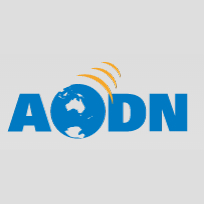Brief description
Parks Australia - Our Marine Parks Grants Round 3 Project: Satellite Mapping of Bathymetry and Habitats of Ashmore and Cartier Island Marine Parks This project aimed to map the satellite-derived bathymetry (SDB) and benthic habitats at 2m horizontal spatial resolution, for the shallow waters (~0-25 m) of the Ashmore Reef and Cartier Island Marine Parks. These critical geospatial data layers provide the essential environmental baseline information for the long-term monitoring and management of these Marine Parks. Mapping the shallow water zone is of importance both from an environmental and socioeconomic perspective. Having access to digital, georeferenced, high-resolution, satellite-derived maps of bathymetry and benthic habitats of shallow water areas, is of fundamental use in the areas of navigation, ecological research, environmental modelling, management and conservation, and monitoring the impacts from climate change.Lineage
Maintenance and Update Frequency: notPlannedNotes
CreditDirector of National Parks (Parks Australia), SDB©EOMAP
Issued: 05 07 2023
Data time period: 2022-08-01 to 2022-09-30
text: westlimit=122.691193; southlimit=-12.8172; eastlimit=123.820038; northlimit=-11.910396
text: uplimit=30; downlimit=0
User Contributed Tags
Login to tag this record with meaningful keywords to make it easier to discover
(DATA ACCESS - Ashmore Reef & Cartier Island satellite-derived bathymetry [direct download data package 820 MB .zip])
(DATA ACCESS - Ashmore Reef & Cartier Island classified habitat [direct download data package 75 MB .zip])
(View and interact with data on Seamap Australia online mapping portal)
uri :
https://seamapaustralia.org/map/#9b5bbd81-d874-41f4-ba35-a2c88fa7d33c![]()
(PDF map of bathymetry - Ashmore Reef)
(PDF map of bathymetry - Cartier Island)
(PDF map of bathymetric vertical uncertainties - Ashmore Reef)
(PDF map of bathymetric vertical uncertainties - Cartier Island)
global : 4739e4b0-4dba-4ec5-b658-02c09f27ab9a
- global : b03e8b87-7e43-4152-9a2c-6b1aa6ae9296


